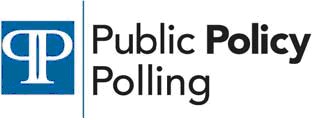One of her key points was this:
Every matchup except one (Moore-Smith) fell within the 4.5 (times 2 remember) margin of error, which means it’s a statistical draw. McCrory and Graham got higher numbers than Moore in their match-ups against him, although with the MOE, it’s a tie all 'round.That the races are a statistical draw is sort of, but not entirely, true.
Washington Monthly wrote an interesting piece on the issue of statistical ties during the 2004 election- I don't necessarily agree with the tone but the substance is correct:
There are two problems with this: first, 95% is not some kind of magic cutoff point, and second, the idea that the MOE represents 95% certainty is wrong anyway. A poll's MOE does represent a 95% confidence interval for each individual's percentage, but it doesn't represent a 95% confidence for the difference between the two, and that's what we're really interested in.So what's the bottom line? Washington Monthly prepared a table showing what the percentage chance there is that a candidate is winning based on their lead in the poll and the margin of error. Rounding up our MOE of 4.5% from this poll to 5, here are the odds:
In fact, what we're really interested in is the probability that the difference is greater than zero — in other words, that one candidate is genuinely ahead of the other. But this probability isn't a cutoff, it's a continuum: the bigger the lead, the more likely that someone is ahead and that the result isn't just a polling fluke. So instead of lazily reporting any result within the MOE as a "tie," which is statistically wrong anyway, it would be more informative to just go ahead and tell us how probable it is that a candidate is really ahead.
Bev Perdue's two point lead over Pat McCrory means there's a 66% chance she's leading him. Her four point lead over Bill Graham means there's a 79% chance she's leading him. Her six point lead on Bob Orr means there's an 89% chance she's leading him. And it's higher for Fred Smith.
On the polls involving Richard Moore, his two point deficit against Bill Graham means there's a 66% chance Graham is in the lead. Same odds with Pat McCrory, who he also trails by a couple points. His margins over Fred Smith and Bob Orr are large enough to get to close to a 100% chance that he's leading them.
Anyway check out the article and the chart, it's an interesting read.
Wrapping up, to quote Kevin Drum again, “from a pure statistical standpoint, a lead is a lead and it's always better to be ahead than behind.” Even when two candidates are within the margin of error, it doesn’t mean that no one is leading.



1 comment:
Thanks for that excellent explanation of the issue, Tom. I recall a lengthy discourse during one of my J-School classes with Phil Meyer years ago where this issue came up, I believe in response to N&O coverage of a poll in the 1986 Senate race. Professor Meyer's point was that we need to keep in mind just how high a 95 percent confidence level is.
Fascinating results on the gubernatorial match-ups, by the way.
Post a Comment